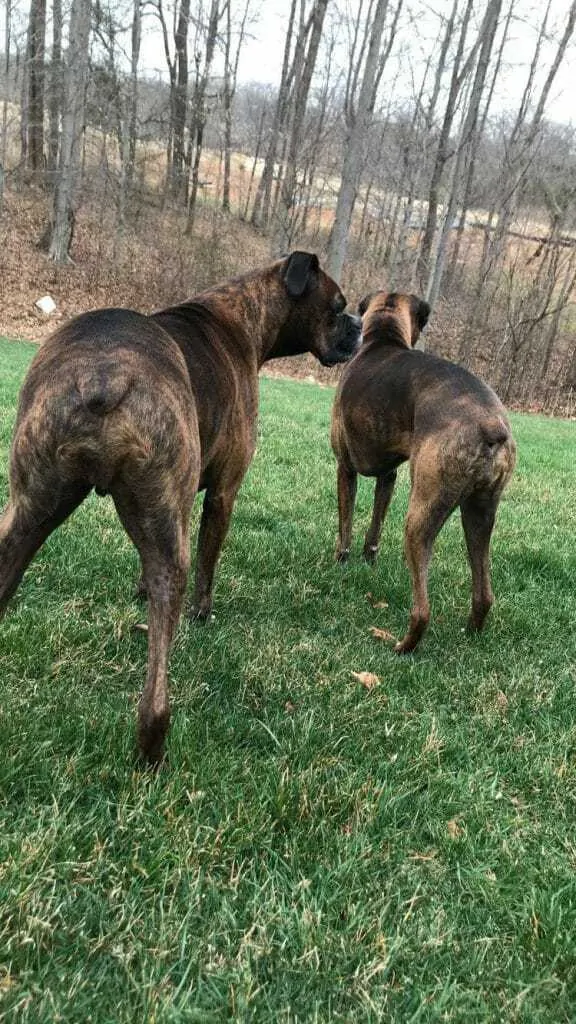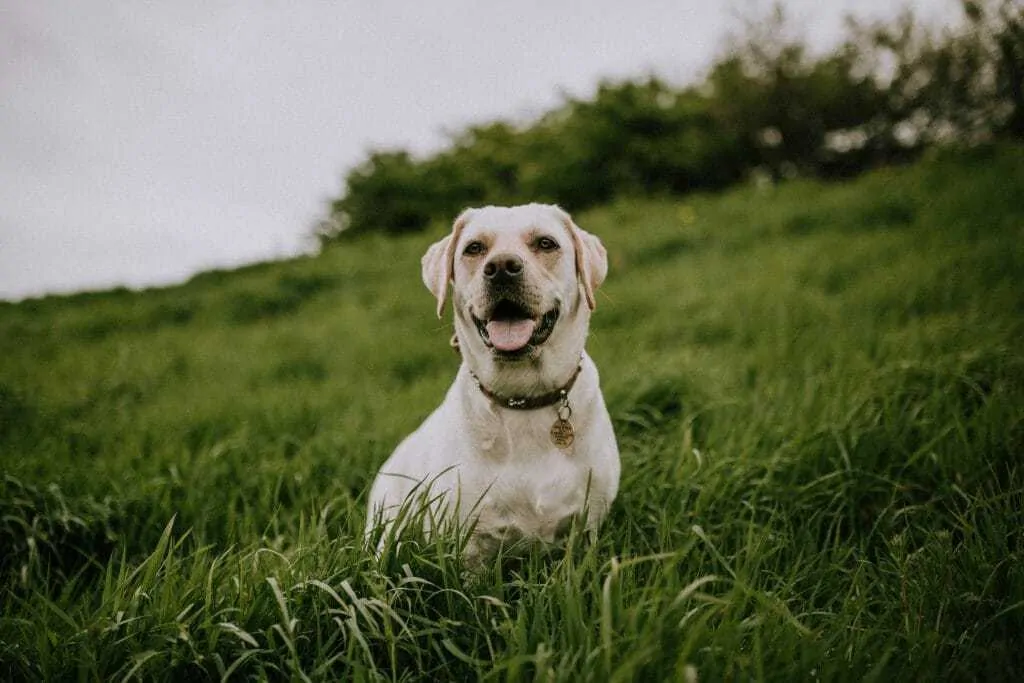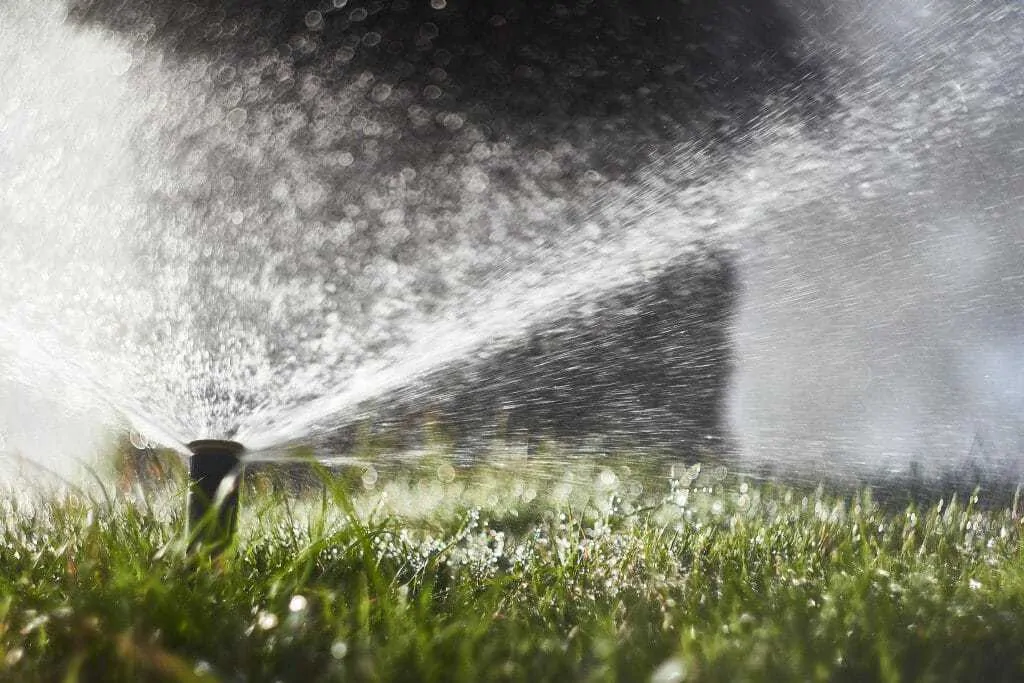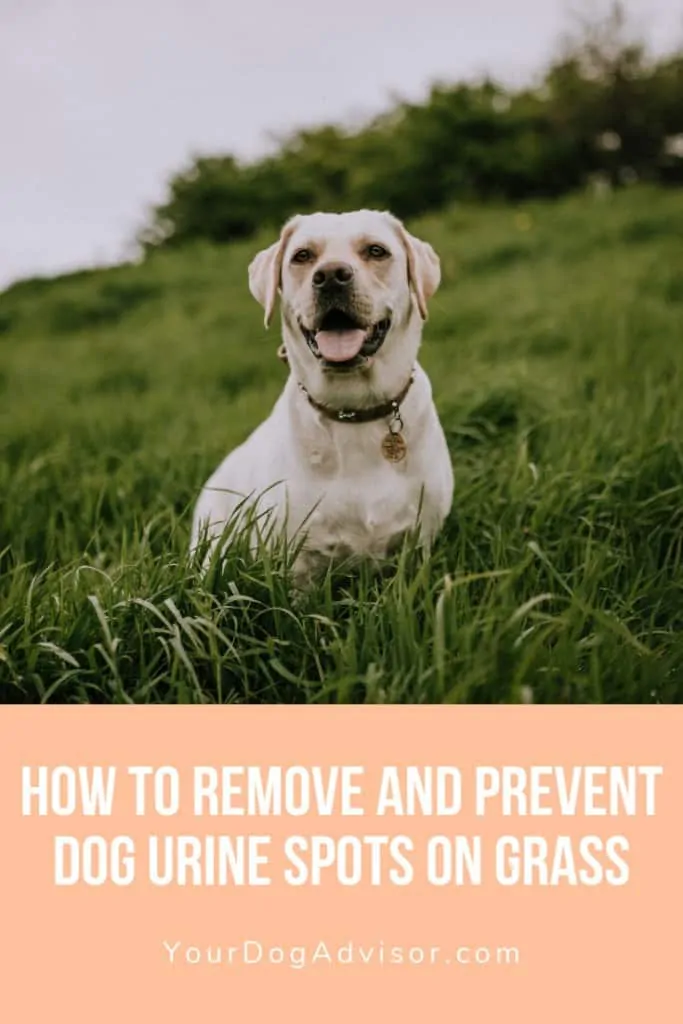Chances are if you have a dog, you also have a sea of dead, brown patches of grass in your yard. Unfortunately, one of the few cons of dog ownership is their urine. Dog urine contains nitrogen, which in small amounts is actually beneficial to grass. But in large amounts, burns it.
It’s a common misconception that female dogs’ urine are the main precursor to your dead lawn, but this isn’t the case. Male dogs often lift their leg to pee, which means their urine goes all over the place and doesn’t all end up in one spot. Female dogs’ urine on the other hand, almost always ends up in one specific spot since they squat.
If you have larger dogs, they’re also more likely to create brown spots simply because they produce large quantities of urine. And if your dog likes to pee in one specific spot, all the more likely more damage will occur to that one spot.
Before you decide to bite the bullet and work on removing the dead patches of grass, make sure that your dog’s pee is actually the culprit.
Brown patches could be the result of a variety of different grass diseases.
To check, pull back pieces of grass from a dead patch. If the roots stay in tact, you’re most likely dealing with dog pee. But if you’re able to easily pull up clumps of grass, including the roots, you probably have a lawn disease that needs to be treated by a lawn care professional.
My two dogs, Levi and Sophie. As you can see, we have quite a lot of pee spots in our yard. It’s proven really difficult to control, but now they usually just pee in one spot of the yard, which has definitely made it easier.
Contents
How to Remove Dog Urine Spots
There are a few occasions where your grass may be salvageable. If it’s not too burnt to the point where it has completely died, you can try these natural remedies first:
- Epsom Salts: Sprinkle epsom salts over the affected area, and water regularly until your grass turns green again.
- Baking Soda: Mix one gallon of water with 2 tablespoons of baking soda. Pour over each brown spot.
At the end of the day, I think natural remedies should be the first line of defense. A lot of the lawn repair systems out there have chemicals that aren’t safe for dogs, even if they claim to be. Better to have a few dead patches of grass than a sick pup!
If your grass has died completely you can try these solutions:
- *Dog-Friendly* Limestone: Rake the affected areas to remove as much dead grass as possible. Add extra-fine ground limestone on top of your brown patches, and water until absorbed. Let it sit for 7 days, then top with top soil and add grass seeds. Water the area, making sure to not wash the grass seeds away. Continue watering until your new grass comes to life!
- Sod: This one is the end-all-be-all. Lying down sod can be expensive, so I would try the above option first. If that doesn’t work, you’ll probably have to replace it with a layer of sod. This is what I ended up doing with my lawn. My dogs usually just pee in one spot, though, so there wasn’t a whole lot to replace.
All in all, the only lawn repair product I would trust and recommend would be the Dogonit Lawn Repair Treatment. This one is pet friendly and seems to work well, as long as you don’t have completely burnt to a crisp grass.
No products found.
How to Prevent Dog Urine Spots
If you do end up replacing your grass completely, be careful of which type of grass you choose, as some will be more likely to burn than others.
Try to stay away from Bermuda and Kentucky Bluegrass, as they’re more likely to burn. Instead, go for Fescue or Perennial Ryegrass.
You can also try these tips:
Don’t Fertilize Your Lawn
Nitrogen is the killer, and most fertilizers already have quite a lot of it. If you fertilize your lawn, you could actually end up making those brown spots worse. Instead, fertilize your lawn less or don’t even fertilize at all.
Water It Down
Right after your dog urinates, grab the hose or a bucket and water the pee spot down to try and get rid of the excess nitrogen sitting in the grass.
Train Your Dog
One of the best preventative measures you can take is to just train your dog to not pee on your lawn. You can set up a nice turf patch, some rocks, mulch, sand, soil, etc. for your dog to pee on instead. Use positive reinforcement, and your dog will eventually head over to his designated potty spot instead of on your nice lawn.
I know this one can get annoying, especially if you’re in a hurry, but another way to prevent those brown spots is to walk your dog on a leash when he has to go pee. This way you’ll have more control over which area of your green lawn he will urinate on.
Switch Up Your Dog Food
Your dog’s food can have an impact on how much nitrogen is in their urine. The more protein in their diet, the more nitrogen they will have in their pee. Your dog food should definitely be meeting the protein requirements for you dog, but not exceeding. You can ask your vet which dog food option should be best when you’re trying to prevent brown spots.
Encourage Your Dog to Drink Water
The more water your dog drinks, the less nitrogen will be in his urine. You can try to encourage more water-drinking through ice cubes, watered-down food, and even very dilute juices.
Fence In Your Yard
Even though you only see your dog peeing in your yard, doesn’t mean other animals aren’t enjoying your grass as well! Neighbors’ animals, stray animals, and wild animals could be urinating on your yard as well. You can talk to your neighbors about not letting their dogs and cats pee in your yard and get a fence to prevent other animals from wandering into your yard as well.
As long as you’re not dead in the middle of the rainy season, try to water your lawn every other day. The less your lawn is watered, the more susceptible it is to brown spots.
Go For More Walks
Whenever you have a free hour during the day, take your pooch out on a walk. This way he’s more likely to pee in a public, dog-friendly grass area, and your lawn won’t have to take on even more dog urine. Your grass will need time to recover.
Use Dog Rocks
Place dog rocks at the bottom of their water bowl. The rocks act as a natural water purifier and help to filter excess nitrogen, tin, ammonia, and other elements out of their water. In return, their pee will have less nitrogen, therefore reducing the amount of brown spots you’ll see.
Dog rocks are definitely one of the safer alternatives, because they don’t alter the PH of your dog’s urine, they only provide a cleaner source of water and help to filter out the chemicals that cause the brown spots.
There’s only really one reputable brand of Dog Rocks. Although they are thought to be a little on the expensive side, so if you’re looking for a last resort type of deal these could be for you.
Remember that dog rocks won’t work as well if your dog has other primary sources of water, like the toilet bowl, stream, etc.
No products found.
If you’re still on the sketchy side of dog rocks, you can try filtering your dog’s water with your own water purifier to see if that helps as well. The goal is to try to provide a cleaner source of water so your dog’s pee doesn’t contain an excess of nitrogen.
Should You Use Grass-Saving Dog Supplements?
There are quite a lot of treats and supplements offered in the dog world market, claiming to save your grass by altering the chemical balance of your dog’s pee.
Most of these supplements work by changing the PH of your dog’s urine, not their nitrogen content. Because of this, giving your dog these medications puts them at risk for urinary crystals or bladder stones – a much bigger problem than your burnt grass.
Some of these supplements also work by adding excess salt to their body, making them more thirsty, and diluting their urine more.
However, the excess salt can be dangerous for dogs, especially those with heart or kidney disease.
You will need to be very picky. Here is one brand of grass saving biscuits that we like.




